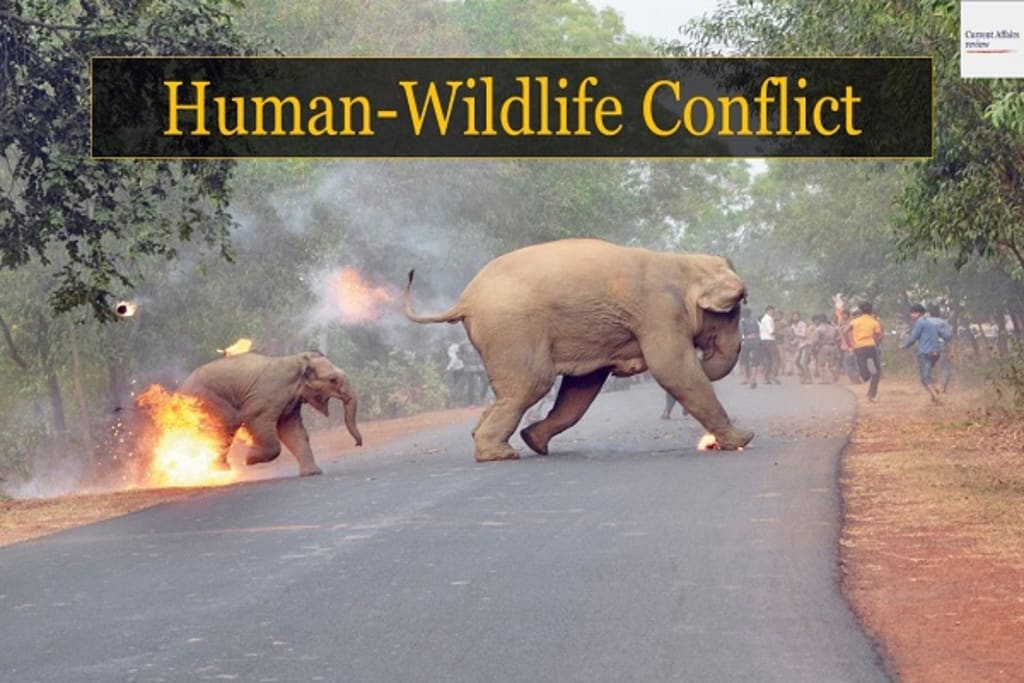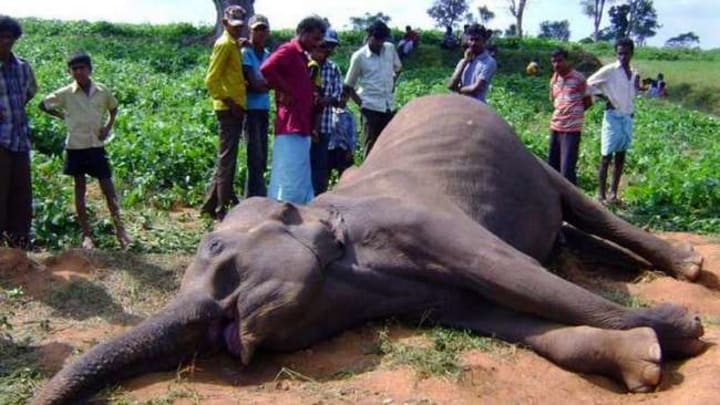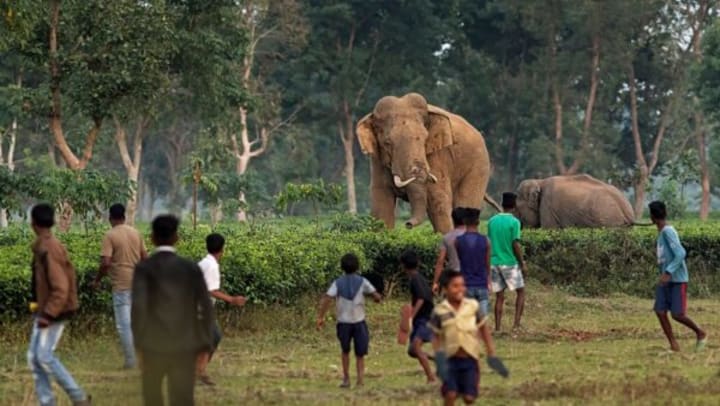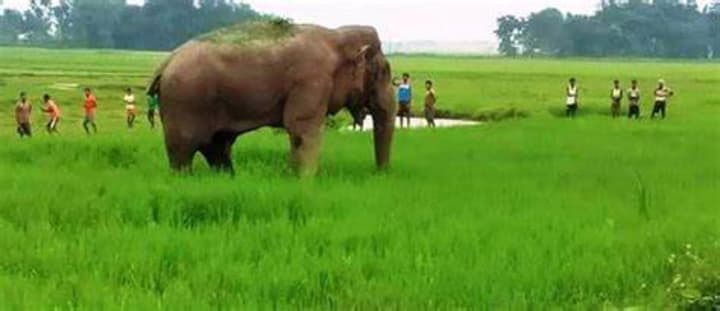Human-Wildlife Conflicts and Cooperation: A New Dawn for Karnataka and Kerala
Elephant

Introduction
Human-wildlife conflict is a significant challenge in many parts of the world, particularly in regions with rich biodiversity. In India, states like Karnataka and Kerala face frequent conflicts due to their substantial wildlife populations and the close proximity of human settlements to natural habitats. Recently, Karnataka and Kerala have taken a monumental step by signing an agreement aimed at tackling human-wildlife conflicts. This pact is designed to improve the management of wildlife corridors and enhance cooperation in monitoring and mitigating conflicts involving elephants and other wildlife that frequently cross state borders. This article delves deep into the specifics of this agreement, its significance, and the broader context of human-wildlife conflicts in India.
The Problem of Human-Wildlife Conflicts
Human-wildlife conflict occurs when the needs and behavior of wildlife impact negatively on human interests, or when human activities threaten the safety and survival of wildlife. In Karnataka and Kerala, these conflicts are particularly acute due to the dense human populations living in close proximity to diverse and dense wildlife habitats.
Elephant Raids:
One of the most pressing issues in these states is the conflict involving elephants. Elephants, in their search for food and water, often stray into agricultural fields, leading to significant crop damage, economic loss, and sometimes even human fatalities. These incidents lead to retaliatory actions by affected communities, further endangering the elephants.
Habitat Fragmentation:
Rapid urbanization, agricultural expansion, and infrastructural development have led to the fragmentation of wildlife habitats. This has disrupted traditional migratory routes, forcing animals to traverse human-dominated landscapes, thereby increasing the likelihood of conflict.
Predator Attacks:
Besides elephants, there are also issues with other wildlife such as leopards and tigers, which occasionally prey on livestock, leading to losses for local farmers and herders.
Conservation Challenges:
While efforts are being made to conserve wildlife, the balance between conservation and human welfare remains delicate. The increasing frequency of conflicts poses a challenge to conservation efforts, as communities affected by wildlife damage may develop negative attitudes towards conservation initiatives.
The Karnataka-Kerala Agreement: Objectives and Strategies
The agreement between Karnataka and Kerala is a landmark initiative aimed at addressing these conflicts through a multi-faceted approach. The primary objectives and strategies of the pact include:
Enhanced Management of Wildlife Corridors:
Wildlife Corridors: One of the main strategies is to improve the management of wildlife corridors. These corridors are essential for the movement of animals between habitats, allowing for genetic exchange and reducing the likelihood of inbreeding. Proper management of these corridors can help ensure that animals, especially large ones like elephants, can move safely without coming into conflict with human populations.
Mapping and Monitoring: The agreement includes initiatives to map and monitor key wildlife corridors, using technologies such as satellite imagery and GPS tracking. This will help in understanding the movement patterns of animals and in planning interventions to reduce conflicts.

Cooperative Monitoring and Data Sharing:
Joint Monitoring Teams:
The states have agreed to form joint monitoring teams that will work together to track wildlife movements and incidents of conflict. These teams will be equipped with modern technology and trained in wildlife management techniques.
Data Sharing:
A crucial part of the agreement is the establishment of a data-sharing framework. Information about wildlife movements, conflict hotspots, and mitigation measures will be shared between the states, enabling more effective and coordinated responses.
Community Involvement and Awareness:
Community Participation:
Recognizing that the success of any wildlife management initiative depends on community support, the agreement emphasizes involving local communities in conservation efforts. This includes educating people about wildlife behavior, conflict prevention strategies, and the benefits of coexistence.
Compensation Schemes:
To address the economic losses suffered by people due to wildlife conflicts, the agreement proposes improved compensation schemes. Timely and adequate compensation can help mitigate negative attitudes towards wildlife and encourage community participation in conservation efforts.
Mitigation Measures and Infrastructure Development:
Physical Barriers: The states plan to invest in physical barriers such as fences and trenches to prevent animals from entering human-dominated areas. These barriers will be strategically placed in high-conflict zones identified through monitoring data.
Alternative Livelihoods: To reduce dependence on agriculture and livestock rearing, which are often affected by wildlife conflicts, the agreement proposes promoting alternative livelihoods. This includes supporting eco-tourism initiatives, handicrafts, and other sustainable income-generating activities.
Legal and Policy Framework:
Harmonization of Policies: The agreement aims to harmonize wildlife conservation policies between the two states. This includes standardizing procedures for conflict management, compensation, and law enforcement.
Strengthening Legal Protections: Enhancing legal protections for wildlife and habitats is another focus. This includes stricter penalties for poaching and habitat destruction, as well as measures to ensure that development projects do not adversely impact critical wildlife areas.
The Broader Context of Human-Wildlife Conflicts in India
India is one of the most biodiverse countries in the world, home to a wide range of flora and fauna. However, the country's rapid development and population growth have led to increased human-wildlife conflicts. Some of the key factors contributing to these conflicts include:
Population Pressure: India's large and growing population exerts tremendous pressure on natural habitats. Encroachment into forests and protected areas for agriculture, housing, and infrastructure development is a major driver of human-wildlife conflicts.
Agricultural Practices: Agricultural expansion into wildlife habitats often leads to conflicts, particularly in areas where traditional migratory routes of animals overlap with farmlands. Crops provide an easy and attractive source of food for herbivores like elephants, leading to frequent raids.
Infrastructure Development: Roads, railways, and other infrastructure projects often cut through wildlife habitats, disrupting animal movements and increasing the risk of accidents and conflicts. Unplanned development can lead to habitat fragmentation, isolating wildlife populations and forcing them into human settlements.
Climate Change: Changing climatic conditions are affecting wildlife habitats and food availability, forcing animals to move into human-dominated areas in search of resources. This exacerbates conflicts, particularly in regions already facing environmental stress.
Conservation Efforts: While conservation initiatives have led to the recovery of some wildlife populations, they have also resulted in increased encounters between humans and wildlife. For instance, the successful conservation of tigers and elephants has led to higher populations, which in turn has increased the frequency of conflicts.

Case Studies and Success Stories
1. The Kaziranga Model:
Kaziranga National Park in Assam is a notable example of successful wildlife conservation despite human-wildlife conflicts. The park is home to a significant population of the Indian rhinoceros, tigers, and elephants. Through a combination of stringent anti-poaching measures, community involvement, and habitat management, Kaziranga has managed to balance conservation with human needs. The park authorities have also implemented effective conflict mitigation strategies, including compensation for crop damage and livestock predation, which have helped maintain local support for conservation efforts.
2. The Nilgiri Biosphere Reserve:
The Nilgiri Biosphere Reserve, spanning parts of Karnataka, Kerala, and Tamil Nadu, is another example of successful human-wildlife coexistence. The reserve is home to a diverse range of wildlife, including elephants, tigers, and leopards. The integration of community-based conservation initiatives, eco-tourism, and sustainable livelihood programs has helped reduce conflicts and promote conservation. The establishment of wildlife corridors and community-managed buffer zones has also played a crucial role in mitigating conflicts and ensuring the safe movement of wildlife.
3. The Rajasthan Leopard Project:
Rajasthan has pioneered innovative approaches to managing human-leopard conflicts. The state has implemented a comprehensive program that includes awareness campaigns, community involvement, and the establishment of rescue and rehabilitation centers for leopards. The project has successfully reduced the incidence of conflict by educating communities about leopard behavior and promoting non-lethal methods of conflict resolution. The focus on coexistence and the involvement of local communities have been key to the project's success.
The Role of Technology in Conflict Mitigation
Technology plays a crucial role in the modern management of human-wildlife conflicts. Several technological solutions have been implemented in Karnataka and Kerala to enhance the effectiveness of conflict mitigation strategies:
GPS and Satellite Tracking: Tracking collars fitted with GPS devices allow for real-time monitoring of wildlife movements. This information helps authorities predict and prevent potential conflicts by alerting local communities and forest officials when animals are approaching human settlements.
Drones and Aerial Surveillance: Drones equipped with cameras and thermal imaging technology are used for aerial surveillance of wildlife habitats. This enables the detection of animal movements and potential conflict situations, allowing for timely intervention.
Early Warning Systems: Early warning systems, including mobile apps and SMS alerts, have been developed to inform communities about the presence of wildlife in their vicinity. These systems help reduce surprise encounters and give people time to take precautionary measures.
Artificial Intelligence: AI-based tools are being used to analyze patterns in wildlife movement and predict potential conflict hotspots. Machine learning algorithms can process large amounts of data from various sources, including camera traps, GPS collars, and weather data, to generate actionable insights.
Smart Barriers: Electrified fences and smart barriers are being used to prevent wildlife from entering human settlements. These barriers are designed to be animal-friendly, causing no harm to the animals while effectively deterring them from crossing into conflict-prone areas.
Challenges and the Way Forward
While the agreement between Karnataka and Kerala represents a significant step forward, several challenges need to be addressed to ensure its success:
Funding and Resources: Adequate funding and resources are essential for the implementation of conflict mitigation measures. Both states will need to allocate sufficient budgetary support and seek additional funding from national and international sources
Challenges and the Way Forward
While the agreement between Karnataka and Kerala to tackle human-wildlife conflicts is a progressive step, several challenges must be addressed to ensure its successful implementation and long-term impact. Here are the primary challenges and potential solutions:
Funding and Resources
Challenge: Adequate funding and resources are critical for the successful implementation of conflict mitigation measures. Both states need substantial financial support to carry out activities such as the construction of physical barriers, compensation schemes, technology deployment, and community engagement programs.
Solutions:
State and Central Government Funding: Both state governments must allocate sufficient budgetary support for wildlife conservation and conflict mitigation in their annual budgets. Additionally, seeking funds from the central government through schemes like the National Mission for Clean Ganga and Compensatory Afforestation Fund Management and Planning Authority (CAMPA) can provide necessary resources.
International Funding: Karnataka and Kerala can seek international funding and technical support from organizations such as the World Wildlife Fund (WWF), Global Environment Facility (GEF), and United Nations Development Programme (UNDP). Grants and partnerships with these organizations can provide financial and technical assistance.
Public-Private Partnerships: Engaging the private sector through Corporate Social Responsibility (CSR) initiatives can generate additional funds. Companies with interests in sustainability and biodiversity can be approached for partnerships.
Eco-tourism Revenue: Promoting eco-tourism can generate revenue, which can be reinvested into conservation efforts. Well-managed eco-tourism projects can provide financial support while also raising awareness about wildlife conservation.

Effective Implementation of Mitigation Measures
Challenge: The successful implementation of mitigation measures such as physical barriers, early warning systems, and alternative livelihoods requires meticulous planning, coordination, and execution.
Solutions:
Expert Consultation: Engaging experts in wildlife biology, conservation, and conflict mitigation can help design and implement effective measures. Collaboration with academic institutions and research organizations can provide valuable insights.
Pilot Projects: Implementing pilot projects in high-conflict areas can help test and refine mitigation strategies before scaling up. Successful pilot projects can serve as models for larger-scale implementation.
Regular Monitoring and Evaluation: Establishing a robust system for monitoring and evaluating the effectiveness of mitigation measures is essential. This involves setting up key performance indicators (KPIs), conducting regular field assessments, and making data-driven adjustments to strategies.
Community Involvement: Ensuring active participation of local communities in the planning and implementation of mitigation measures can enhance their effectiveness. Community members can provide valuable local knowledge and support conservation efforts.
Legal and Policy Framework
Challenge: Ensuring a strong legal and policy framework that supports wildlife conservation and conflict mitigation is crucial. Inconsistent policies and weak enforcement can undermine efforts to address human-wildlife conflicts.
Solutions:
Policy Harmonization: Harmonizing wildlife conservation policies between Karnataka and Kerala can streamline conflict management efforts. This includes standardizing procedures for compensation, law enforcement, and habitat management.
Strengthening Legal Protections: Enhancing legal protections for wildlife and their habitats is essential. This involves stricter penalties for poaching and habitat destruction, as well as ensuring that development projects do not adversely impact critical wildlife areas.
Capacity Building: Training and capacity building for law enforcement agencies, forest officials, and community members can improve the implementation and enforcement of wildlife protection laws.
Technological Integration
Challenge: Leveraging technology for conflict mitigation requires substantial investment and technical expertise. Ensuring the effective deployment and maintenance of technologies like GPS tracking, drones, and early warning systems can be challenging.
Solutions:
Collaborations with Tech Firms: Partnering with technology firms and research institutions can provide access to cutting-edge technologies and technical expertise. Collaborative projects can facilitate the development and deployment of customized solutions.
Training Programs: Conducting training programs for forest officials, community members, and other stakeholders on the use and maintenance of technological tools can enhance their effectiveness.
Data Management Systems: Establishing centralized data management systems for storing, analyzing, and sharing information about wildlife movements and conflict incidents can improve coordination and response strategies.
Community Engagement and Awareness
Challenge: Gaining the support and cooperation of local communities is essential for the success of conflict mitigation efforts. Negative attitudes towards wildlife and conservation initiatives can hinder progress.
Solutions:
Education and Awareness Campaigns: Conducting education and awareness campaigns to inform communities about wildlife behavior, conflict prevention strategies, and the benefits of coexistence can foster positive attitudes.
Participatory Approaches: Involving communities in decision-making processes and conservation activities can build trust and cooperation. Participatory approaches, such as community-managed buffer zones and wildlife corridors, can empower communities and ensure their active involvement.
Incentive Programs: Implementing incentive programs, such as compensation schemes for crop damage and livestock predation, can mitigate economic losses and encourage community support for conservation efforts. Providing alternative livelihoods through sustainable income-generating activities can also reduce dependence on agriculture and livestock rearing.
Addressing Long-Term Sustainability
Challenge: Ensuring the long-term sustainability of conflict mitigation efforts requires continuous commitment, adaptation, and resilience to changing environmental and socio-economic conditions.
Solutions:
Adaptive Management: Implementing adaptive management practices that allow for continuous learning, flexibility, and adjustment of strategies based on monitoring and evaluation results can enhance the resilience and effectiveness of conflict mitigation efforts.
Building Local Capacity: Investing in capacity building for local institutions, communities, and stakeholders can ensure the sustainability of conservation initiatives. Strengthening local governance structures and promoting community-based conservation models can enhance long-term outcomes.
Climate Resilience: Incorporating climate resilience into conflict mitigation strategies can help address the impacts of climate change on wildlife habitats and human livelihoods. This includes promoting climate-smart agricultural practices, water management, and habitat restoration projects.
Conclusion
The agreement between Karnataka and Kerala to tackle human-wildlife conflicts represents a significant step forward in promoting coexistence and conservation. By addressing challenges related to funding, implementation, legal frameworks, technology, community engagement, and long-term sustainability, the states can develop effective and enduring solutions to human-wildlife conflicts. Collaborative efforts, innovative approaches, and a commitment to adaptive management will be crucial in ensuring the success of this initiative and fostering a harmonious relationship between humans and wildlife in the region.
About the Creator
Enjoyed the story? Support the Creator.
Subscribe for free to receive all their stories in your feed. You could also pledge your support or give them a one-off tip, letting them know you appreciate their work.






Comments
There are no comments for this story
Be the first to respond and start the conversation.